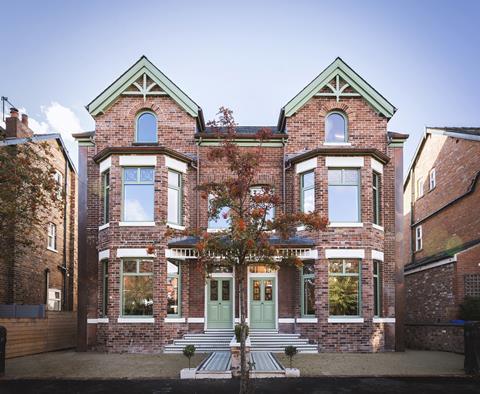New handbook sets clear energy use targets but warns of skills gap ahead of 30m-home retrofit marathon

A network of more than 100 leading architects, engineers and building professionals has published a much-anticipated handbook for retrofitting housing that is expected to become a key tool in upgrading the UK’s housing stock to meet the government’s net-zero ambitions.
The London Energy Transformation Initiative – LETI for short – said its Climate Emergency Retrofit Guide set out a blueprint for how the nation can retrofit its housing stock to support the government’s target of reaching net-zero carbon emissions by 2050. The 200-page guide follows the publication of the government’s Heat and Buildings Strategy earlier this week.
LETI warns that the nation needs to retrofit 30 million homes over the next three decades at a time when the construction industry faces skills shortages – and dubs the challenge “monumental”. It said the nation’s current housing stock is responsible for around 18% of greenhouse gas emissions, and that the vast majority of homes that will exist in 2050 have already been built.
The guide defines retrofit specifications for four primary housing types and provides advice on how to meet those specifications. It sets out space heating and energy use requirements that target a reduction in energy consumption of between 60% and 80% for the average UK home.
LETI said the targets had been determined through a combination of practical experience and understanding of what measures were realistically achievable, informed by a national housing stock model to examine issues like renewable energy provision and grid capacity.
Practices including Feilden Clegg Bradley Studios, Levitt Bernstein, dRMM, Haworth Tompkins, Woods Bagot and Corstorphine & Wright Architects contributed to the guide, which is backed by the RIBA and the Passivhaus Trust.
Case studies highlighted that retrofitting does not come cheap. One project on a two-bedroom Victorian mid-terrace home in London that was carried out for housing association Peabody Trust came with a price tag of £80,000.
A project involving the retrofitting and extension of two semi-detached properties in Manchester, delivered by Guy Taylor Associates and consultant Ecospheric, had a budget of £887,000 for both homes.

Peter Clegg, senior partner at architect FCBS, acknowledged that retrofitting homes was one of the most intractable problems facing the nation on the road to zero-carbon emissions.
“It’s not easy: governments have failed over and over again to live up to promises. It’s not cheap: we often underestimate the complexity of deep green retrofit,” he said.
“It’s not glamorous: the architectural profession is guilty of a lack of engagement. But it is absolutely essential that we focus on the 80% of our domestic buildings which leak carbon into the atmosphere at such a phenomenal rate.
“We need to start now educating a workforce of designers and builders who have the required knowledge and commitment.”
Richard McWilliams, director of sustainability at consultant Turner & Townsend, said he believed the LETI guide’s setting of performance targets of 50kW/sq m/year was “pivotal” for the market.
“We now need to develop the commercial, industrial and delivery approaches to realise these targets as an investable pathway to net zero,” he said. “But LETI have thrown down the gauntlet to the housing sector and supply chain.”
Clare Murray, head of sustainability at housing architect Levitt Bernstein, said the nation could not afford to retrofit homes twice and the LETI guide showed how it could be done properly the first time around.











No comments yet